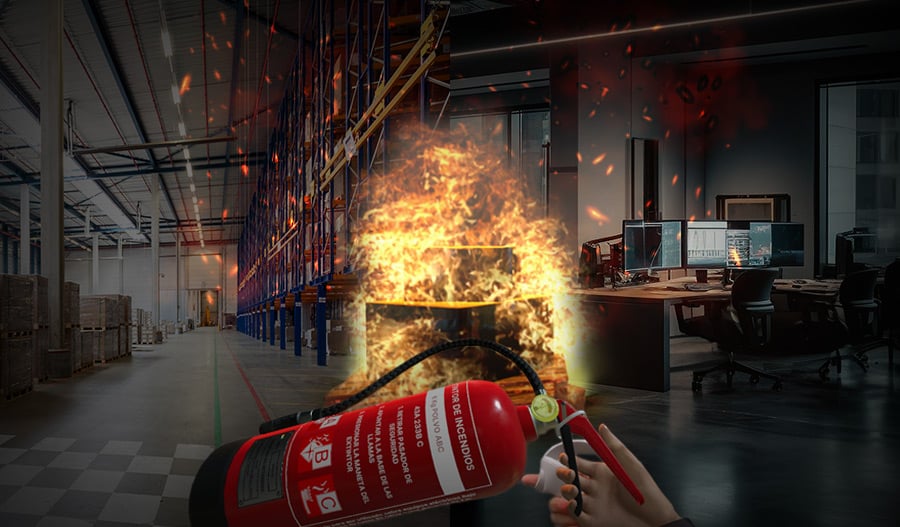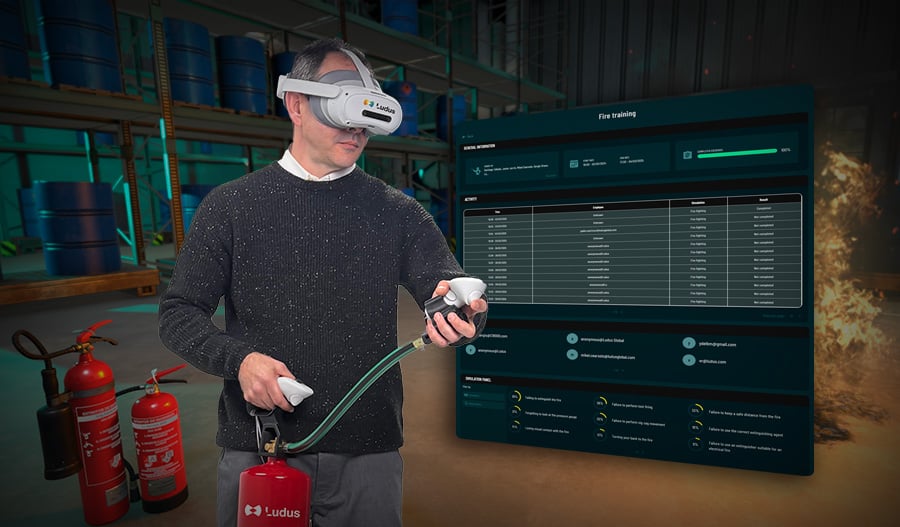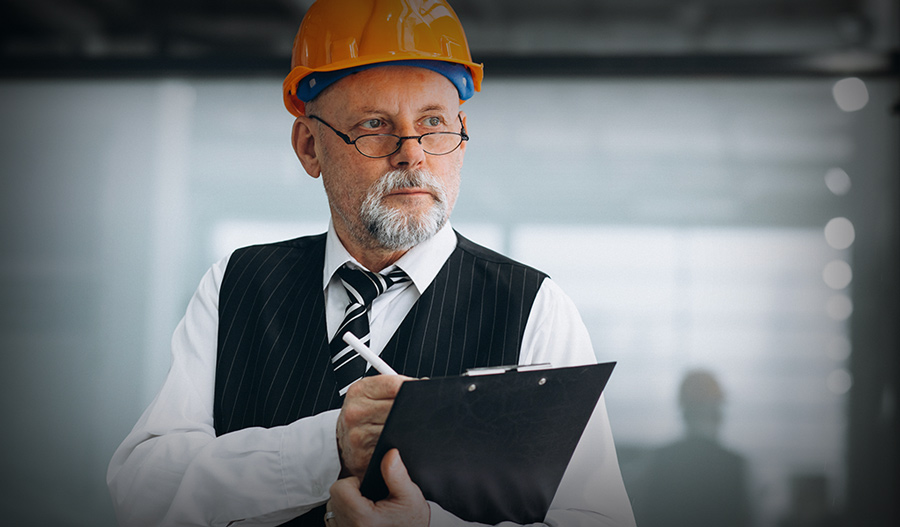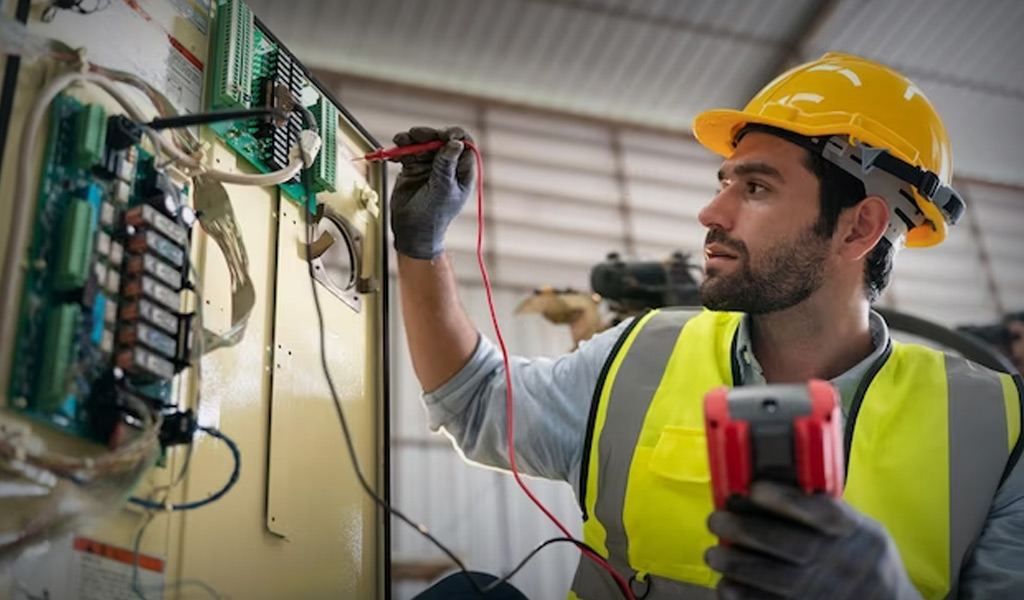- Equipping with Personal Protective Equipment (PPE).
- Isolation of the confined space for different risks.
- Signaling the area and placing the tripod.
- Measurement of the atmosphere inside.
- Ventilation of the confined space, if necessary.
- Authorization to enter the confined space.
- Entry into the confined space.
What is a confined space?
A confined space is a workplace with poor ventilation and limited entry and exit openings. It is an environment with a high level of hazard and is not designed for prolonged periods of time for the worker.
The characteristics of a confined space make it a dangerous place to work, as toxic or flammable gases often accumulate. Lack of ventilation and oxygen are other hazards in these places. Therefore, a specific safety protocol must be followed to enter a confined space.
As mentioned, to enter and perform work in a confined space, it is necessary to know and complete a specific protocol. Training employees to implement all safety measures can save lives.
Steps to enter a confined space
Equipping with appropriate Personal Protective Equipment (PPE)
Putting on PPE is necessary, both for the operator entering the confined space and the safety resource (who will supervise the work from the outside).
Depending on the characteristics of the confined space, the necessary protective equipment may include: respiratory masks like the FFP2 mask, harness, safety rope, boots, protective suit, gloves, protective goggles, helmet...
Isolation of the confined space for different risks
It is essential to ensure that the confined space is completely isolated or protected against certain hazards while working in it.
The main risks that must be prevented in this way to protect the operator are two:
- Uncontrolled electrical supply, which may unexpectedly start mechanical devices or accidentally energize some element.
- Leaks or spills in elements connected to the confined space, allowing the entry of toxic agents.
This isolation must be carried out using locking elements, which must be properly signaled and can only be manipulated by a responsible person.
Signaling the area and placing the tripod
There must be adequate signage indicating that work is being carried out in a confined space. The tripod provides anchor points that allow for easy rescue in case of an accident.
Measurement of the atmosphere inside
Measurements are taken using the appropriate instruments, such as specific meters or detectors, from outside the confined space or a safe zone.
First, the entrance to the confined space is partially opened, and a measurement is taken, then a second one with the entrance fully open. If necessary, the meter can be introduced attached to a rope to measure the atmosphere inside.
There are three measurements that may be necessary depending on the confined space:
- Measurement of the oxygen level, which should not be less than 20.5%.
- Flammable or explosive atmospheres.
- Measurement of toxic atmospheres.
The safety resource must record the measurement results before authorizing the operator to enter the confined space.
Ventilation of the confined space, if necessary
Natural ventilation in confined spaces is often insufficient. Therefore, a special fan should be used to constantly renew the interior environment of the confined space.
Authorization to enter the confined space
Once the safety procedures are completed, the safety resource must authorize the operator to enter the confined space. In addition, an entry permit must be signed and a checklist of all completed steps must be completed.
Entry into the confined space
The operator, properly protected, can enter to perform the work in the confined space, maintaining constant communication with the outside. This can be done through transmission means such as a walkie-talkie. The safety resource will record the entry and exit times.
This entire protocol is not easy to remember without proper training. Therefore, it is very important to provide training in risk prevention to confined space workers.
In addition to mandatory practical training, there is a tool that complements theoretical training, adding a realistic and experiential component: Virtual Reality. With this technology, the confined space entry procedure can be repeated and practiced many times without extra cost.
Virtual Reality in confined space training
Virtual Reality (VR) reproduces real scenarios in simulations, such as a sewer system or another confined space. The trainer can place the operator in front of a realistic situation of entering a confined space, using VR glasses.
The trainer configures the simulation and exercises, but the trained operator then makes decisions in the training. They must correctly complete the procedure to enter the virtual confined space, avoiding mistakes and accidents.
The realism of these simulations has a dual benefit. On one hand, it is easier for the operator to remember and assimilate the procedure by practicing it realistically. On the other hand, the ability to see the consequences of an error in the form of an accident reinforces their awareness of the risks.
Although it does not replace mandatory practices, VR strengthens the theoretical part of these trainings, preparing the employee for practical implementation.
Working in a confined space is a high-risk activity, and all tools and precautions are essential to protect the workers.
Do you want to learn more about Ludus' confined space simulation or how to implement virtual reality in your occupational safety training?
Fill out this form, and we will contact you to provide information.













